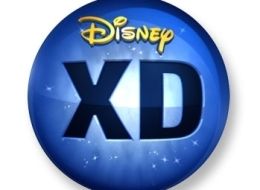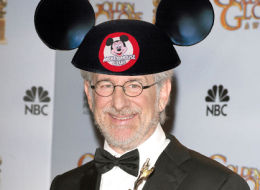Disney, Casino Capitalism and the Exploitation of Young Boys: Beyond the Politics of Innocence
Wednesday 15 April 2009
by: Henry A. Giroux, t r u t h o u t | Perspective
http://www.truthout.org/041509J
 "Disney is in the forefront of finding ways to capitalize on the $50 billion dollars spent worldwide by young boys between the ages of 6 and 14."
"Disney is in the forefront of finding ways to capitalize on the $50 billion dollars spent worldwide by young boys between the ages of 6 and 14."
Casino capitalism may be getting a bad rap in the mainstream media, but the values that nourish it are alive and well in the world of Disney.[1] As reported recently in a front-page article in The New York Times, Disney is in the forefront of finding ways to capitalize on the $50 billion dollars spent worldwide by young boys between the ages of 6 and 14.[2] As part of such efforts, Disney has enlisted the help of educators, anthropologists and a former researcher with "a background in the casino industry" to not only study all aspects of the culture and intimate lives of young boys, but to do so in a way that allows Disney to produce "emotional hooks" that lure young boys into the wonderful world of corporate Disney in order to turn them into enthusiastic consumers.[3]
The potential for lucrative profits to be made off the spending habits and economic influence of kids has certainly not been lost on Disney and a number of other mega corporations, which under the deregulated, privatized, no-holds-barred world of the free market have set out to embed the dynamics of commerce, exchange value and commercial transactions into every aspect of personal and daily life. If Disney had its way, kids' culture would become not merely a new market for the accumulation of capital but a petri dish for producing new commodified subjects. As a group, young people are vulnerable to corporate giants such as Disney, who make every effort "to expand inwardly into the psyche and emotional life of the individual in order to utilize human potential" in the service of a market society.[4] Since children's identities have to be actively directed toward the role of consumers, knowledge, information, entertainment and cultural pedagogy become central in shaping and influencing every waking moment of children's daily lives. In this instance, Disney, with its legion of media holdings, armies of marketers and omnipresent advertisers, set out not to just exploit young boys and other youth for profit; they are actually constructing them as commodities and promoting the concept of childhood as a saleable commodity.
What is particularly disturbing in this scenario is that Disney and a growing number of marketers and advertisers now work with child psychologists and other experts who study young people in order to better understand children's culture so as to develop marketing methods that are more camouflaged, seductive and successful.[5] For example, Disney's recent attempts to "figure out the boys' entertainment market," includes the services of Kelly Pena, described as "the kid whisperer," who in an attempt to understand what makes young boys tick, uses her anthropological skills to convince young boys and their parents to allow her to look into the kids' closets, go shopping with young boys and pay them $75 to be interviewed. Ms. Pena, with no irony intended, prides herself on the fact that "Children ... open up to her."[6]
Disingenuously wrapping itself in the discourse of innocence and family-oriented amusement in order to camouflage the mechanisms and deployment of corporate power, Disney's use of its various entertainment platforms, which cuts across all forms of traditional and new media, is relentless in its search for younger customers and its bombarding of young people incessantly with the pedagogy of commerce.[7] Under the tutelage of Disney and other mega corporations, children have become a captive audience to traditional forms of media, such as television and print, and, even more so, to new media such as mobile phones, MP3 players, the Internet, computers, and other forms of electronic culture that now seem to provide the latest products at the speed of light. Kids can download enormous amounts of media in seconds and carry around such information, images and videos in a device the size of a thin cigarette lighter. Moreover, "[media] technologies themselves are morphing and merging, forming an ever-expanding presence throughout our daily environment."[8] Mobile phones alone have grown "to include video game platforms, e-mail devices, digital cameras, and Internet connections," making it easier for marketers and advertisers to reach young people.[9] Kids of all ages now find themselves in what the Berkeley Media Studies Group and the Center for Digital Democracy call "a new 'marketing ecosystem' that encompasses cell phones, mobile music devices, broadband video, instant messaging, video games, and virtual three-dimensional worlds," all of which provide the knowledge and information that young people use to navigate the consumer society.[10] Disney along with its researchers, marketing departments and purveyors of commerce largely control and services this massive virtual entertainment complex, spending vast amounts of time trying to understand the needs, desires, tastes, preferences, social relations and networks that define youth as a potential market. Disney's recent attempt to corner the young male market through the use of sophisticated research models, ethnographic tools and the expertise of academics to win over the hearts and minds of young people so as to develop strategies to deliver them to the market as both loyal consumers and commodities indicates the degree to which the language of the market has disengaged itself from either moral considerations or the social good. Disney claims this kind of intensive research pays off in lucrative dividends and reinforces the Disney motto that in order to be a successful company "You have to start with the kids themselves."[11]
Children are increasingly exposed to a marketing and advertising pedagogical machinery eager and ready to transform them into full-fledged members of the consumer society. And the amount of time they spend in this commercial world defined by Disney and a few other corporations is as breathtaking as it is disturbing. For instance, "It has been estimated that the typical child sees about 40,000 ads a year on TV alone,"[12] and that by the time they enter the fourth grade they have "memorized 300-400 brands."[13] In 2005, the Kaiser Family Foundation reported that young people are "exposed to the equivalent of 8 hours a day of media content ... [and that] the typical 8-18 year-old lives in a home with an average of 3.6 CD or tape players, 3.5 TVs, 3.3 radios, 2.0VCRs/DVD players, 2.1 video game consoles and 1.5 computers." In the synoptic world of ads and marketing practices, the project of commercializing and commodifying children is ubiquitous and can be found wherever a previously noncommodified space existed. Hence, it comes as no surprise to find ads, logos, and other products of the marketing juggernaut pasted on school walls, public buildings, public transportation systems, textbooks, public washrooms and even on baseball diamonds.
Given its powerful role in monopolizing all modes of communication, especially those that are media driven, Disney exercises a highly disproportionate concentration of control over the means of producing, circulating and exchanging information, especially to kids. By spreading its ideology all over the globe through film, television, satellite broadcasting technologies, the Internet, posters, magazines, billboards, newspapers, videos, and other media forms and technologies, Disney has transformed culture into a pivotal educational force. Through this insidious form of public pedagogy, Disney not only commercializes and infantilizes most of what it touches, it also shuts down those public spaces where kids can learn noncommodified values. Pixie-dust magic may appeal to the world of fantasy, but it offers no language for defining vital social institutions as a public good, links all dreams to the logic of the market and harnesses the imagination to forces of unfettered consumerism. Whether talking about United States or other parts of the globe, it is fair to argue that for the first time in human history, centralized commercially-driven conglomerates hold sway over the stories and narratives that shape children's lives. Unfortunately, this rather sublime education often derived from unethical modes of research is absorbed by kids as entertainment and often escapes any critical or self-reflection.
The disconnect between market values and ethical considerations is on full display in Disney's almost boastful use of research to mine the inner lives and experiences of young children. That such an admission both receives front page coverage in The New York Times and is presented without critical commentary is a testament to how commercial values have numbed the public's ability to recognize the danger such values often present to children. Challenging the meaning, legacy and ideology of the Disney empire is part of a larger challenge to the emergence of free-market fundamentalism as an economic model and a form of public pedagogy and its implications for disavowing both public life and any democratic notion of young people. Getting beyond Disney means, in part, theorizing children as a social investment and democracy as a process and a promise rather than a fantasy world in which pixie dust and mass entertainment cover up the swindle of fulfillment and joy that Disney offers in its endless appeal to consumerism.
As citizenship becomes increasingly privatized and youth are increasingly educated to become consuming subjects rather than civic minded and critical citizens, it becomes all the more imperative for people everywhere to develop a critical language in which notions of the public good, public issues and public life become central to overcoming the privatizing and depoliticizing language of the market. Disney, like many corporations, trades in sound bytes and the result is that the choices, exclusions and values that inform its narratives about joy, pleasure, living and existing in a global world are often difficult to discern. Disney needs to be addressed within a widening circle of awareness, so we can place the history, meaning and influence of the Disney empire outside of enforced horizons and confinements that often shut down critique and critical engagement with Disney's commercial carpet bombing of children.
All of us who participate in the Disneyfication of culture need to excavate the silences, memories and exclusions that challenge the identities offered to young people by Disney under the name of the innocence, nationalism and entertainment. As one of the most influential corporations in the world, Disney does more than provide entertainment, it also shapes in very powerful ways how young people understand themselves, relate to others and experience the larger society. It is not difficult to recognize a certain tragedy in the fact that because of a lack of resources, kids disappear literally in foster care institutions, teachers are overwhelmed in overcrowded classrooms, state services drained of funds cannot provide basic food and shelter to a growing army of kids who now inhabit rapidly emerging tent cities. Yet, corporations such as Disney have ample funds to hire a battalion of highly educated and specialized experts to infiltrate the most intimate spaces of children and family life. All the better to colonize and commodify the netherworld of childhood, their fears, aspirations and their future. Disney's commodification of childhood is neither innocent nor simply entertaining and the values it produces, as it attempts to commandeer children's desires and hopes, may offer us one of the most important clues about the nature and destructive forces behind the current economic and financial crisis. But don't expect a Congressional hearing soon on this issue.
* * *
NOTES:
[1] Brooks Barnes, "Disney Expert Uses Science to Draw Boy Viewers," New York Times (April 14, 2009), P. A1.
[2] Ibid., Brooks Barnes, P. A1.
[3] Jonathan Rutherford, "Cultures of Capitalism," Soundings 38 (Spring 2008). Online:
http://www.lwbooks.co.uk/journals/sound ... apitalism1.
[4] A number of psychologists, especially Allen D. Kanner, have publicly criticized this practice by child psychologists. In fact, Kanner and some of his colleagues raised the issue in a letter to the American Psychological Association. See Miriam H. Zoll, "Psychologists Challenge Ethics of Marketing to Children," American News Service (April 5, 2000). Online:
http://www.mediachannel.org/originals/kidsell.shtml. See also Allen D. Kanner, "The Corporatized Child," California Psychologist 39.1 (January/February 2006), pp. 1-2; and Allen D. Kanner, "Globalization and the Commercialization of Childhood," Tikkun 20:5 (September/October, 2005), pp. 49-51. Kanner's articles are online:
http://www.commercialfreechildhood.org/articles/.
[5] Brooks Barnes, "Disney Expert Uses Science to Draw Boy Viewers," New York Times (April 14, 2009), P. A14.
[6] For a list of the Walt Disney Company's vast holdings, see Columbia Journalism Review "Who Owns What," (April 14, 2009). Online:
http://www.cjr.org/resources/?c=disney
[7] Victoria Rideout, Donald F. Roberts, and Ulla G. Foehr, Generation M: Media in the Lives of 8-18 Year-Olds (Washington, D. C.: The Kaiser Family Foundation, March 2005), p. 4.
[8] Rideout, Roberts, and Foehr, Generation M, p. 4.
[9] Jeff Chester and Kathryn Montgomery, Interactive Food and Beverage Marketing: Targeting Children in the Digital Age (Berkeley: Media Studies Group; Washington, D.C.: Center for Digital Democracy, 2007), p. 13. Online:
http://digitalads.org/documents/digiMarketingFull.pdf.
[10] Ibid., Brooks Barnes, Disney Expert Uses Science to Draw Boy Viewers," P. A14.
[11] Editorial, "The Role of Media in Childhood Obesity," Issue Brief (February 2004). Online:
http://www.kaiserfamilyfoundation.org/e ... besity.pdf. See also Zoe Williams, "Commercialization of Childhood," Compass: Direction for the Democratic Left (December 1, 2006). Online:
http://www.criancaeconsumo.org.br/downl ... ritain.pdf. Williams estimates that children in both the United States and the United Kingdom are "exposed to between 20,000 and 40,000 ads a year."
[12] Juliet B. Schor, Born to Buy (New York: Scribner, 2005), p. 25.
[13] Victoria Rideout, Donald F. Roberts, and Ulla G. Foehr, "Generation M: Media in the Lives of 8-18 Year-Olds" (Washington, DC: The Kaiser Family Foundation, March 2005), pp. 6, 9.























